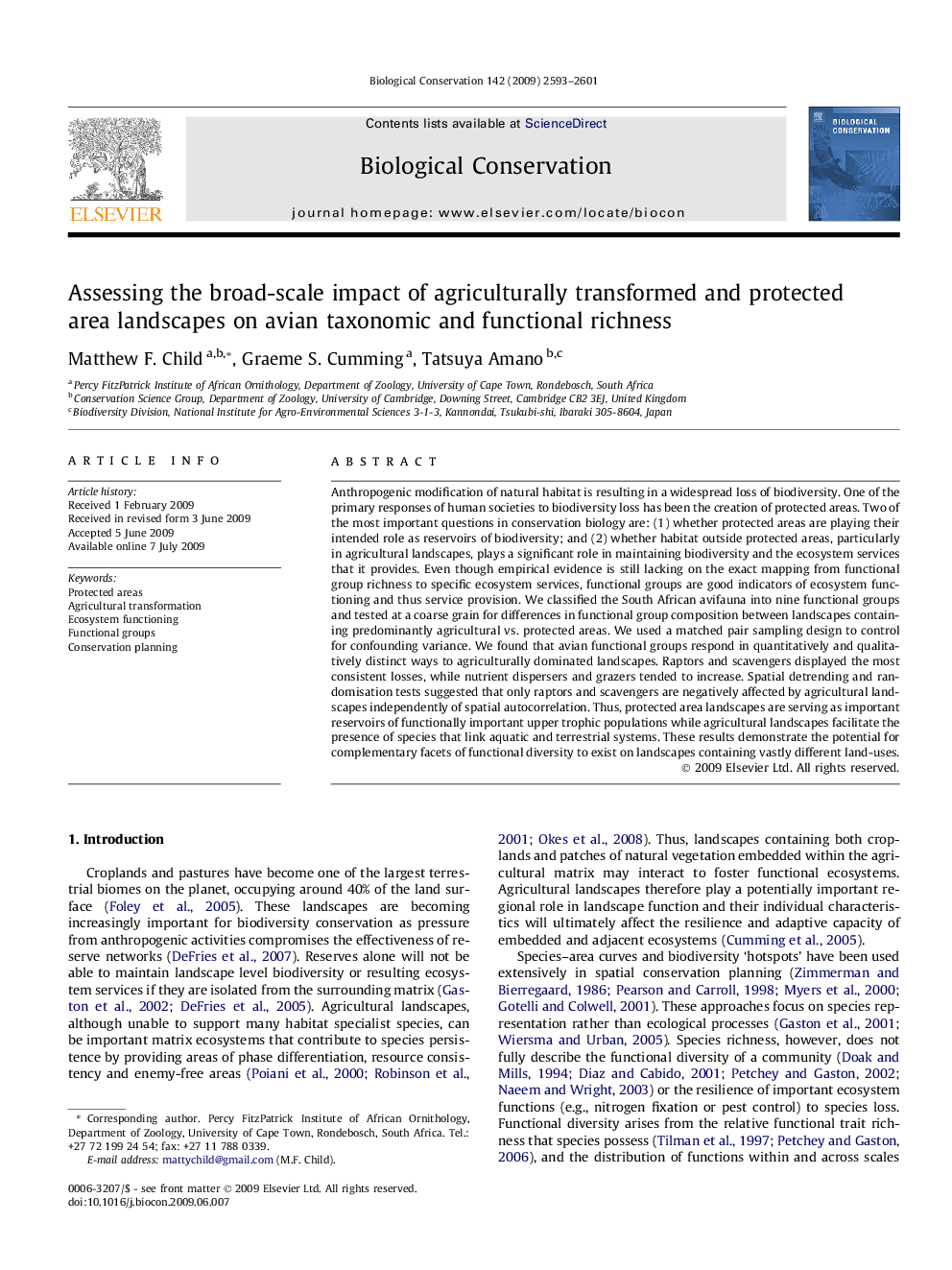| Article ID | Journal | Published Year | Pages | File Type |
|---|---|---|---|---|
| 4385862 | Biological Conservation | 2009 | 9 Pages |
Abstract
Anthropogenic modification of natural habitat is resulting in a widespread loss of biodiversity. One of the primary responses of human societies to biodiversity loss has been the creation of protected areas. Two of the most important questions in conservation biology are: (1) whether protected areas are playing their intended role as reservoirs of biodiversity; and (2) whether habitat outside protected areas, particularly in agricultural landscapes, plays a significant role in maintaining biodiversity and the ecosystem services that it provides. Even though empirical evidence is still lacking on the exact mapping from functional group richness to specific ecosystem services, functional groups are good indicators of ecosystem functioning and thus service provision. We classified the South African avifauna into nine functional groups and tested at a coarse grain for differences in functional group composition between landscapes containing predominantly agricultural vs. protected areas. We used a matched pair sampling design to control for confounding variance. We found that avian functional groups respond in quantitatively and qualitatively distinct ways to agriculturally dominated landscapes. Raptors and scavengers displayed the most consistent losses, while nutrient dispersers and grazers tended to increase. Spatial detrending and randomisation tests suggested that only raptors and scavengers are negatively affected by agricultural landscapes independently of spatial autocorrelation. Thus, protected area landscapes are serving as important reservoirs of functionally important upper trophic populations while agricultural landscapes facilitate the presence of species that link aquatic and terrestrial systems. These results demonstrate the potential for complementary facets of functional diversity to exist on landscapes containing vastly different land-uses.
Keywords
Related Topics
Life Sciences
Agricultural and Biological Sciences
Ecology, Evolution, Behavior and Systematics
Authors
Matthew F. Child, Graeme S. Cumming, Tatsuya Amano,
